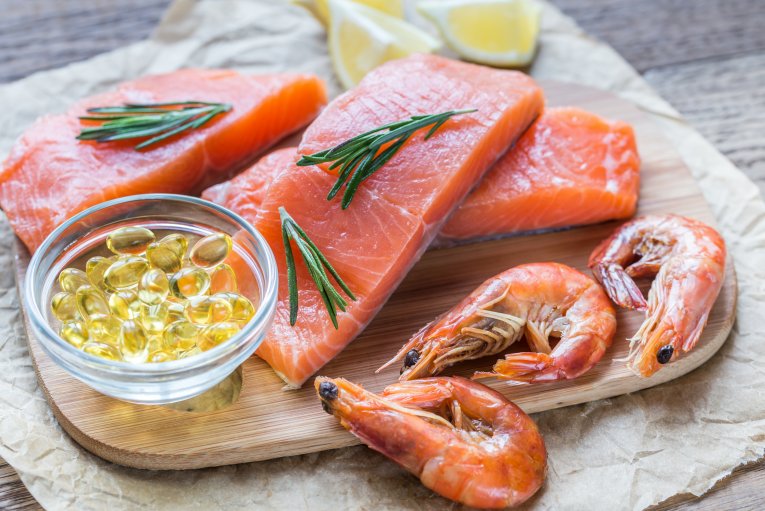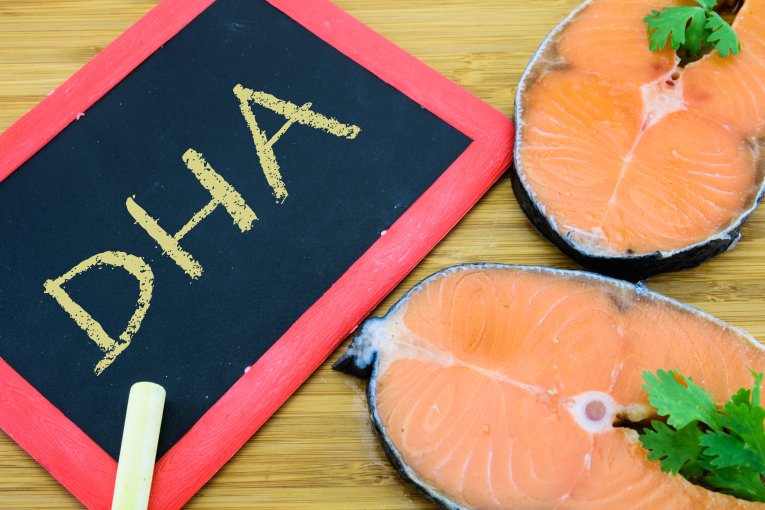This article was written by Prof. Doug Tocher, from the Institute of Aquaculture (University of Stirling)
Fish oil is a natural source of the omega-3 long-chain polyunsaturated fatty acids (EPA and DHA), that are essential nutrients for all vertebrates having important roles in development and in regulating metabolism and physiology. Thus, dietary EPA and DHA have beneficial effects in a range of human pathologies including cardiovascular and inflammatory diseases, and important roles in neural development and function.

Omega-3 and omega-6 work in balance
There are also omega-6 fatty acids such as arachidonic acid, which similarly have essential metabolic functions that are generally opposite to those of omega-3. Therefore, omega-3 and omega-6 work in balance to control and regulate physiology. However, in the last century or so, industrial agriculture and the rise of vegetable oils has seen a huge shift in this balance with dietary omega-6 now exceeding omega-3 by over 20-fold resulting in many metabolic conditions. Dietary fish oil rich in omega-3 long-chain polyunsaturated fatty acids has beneficial health effects by mitigating the excess dietary omega-6 and restoring this balance.
Dietary omega-6 now exceeding omega-3 by over 20-fold
The omega-3 long-chain polyunsaturated fatty acids have the same essential roles in fish as they do in humans and so dietary omega-6 and omega-3 need to be in balance in fish to have beneficial effects on metabolism and physiology. However, the current situation in diets for farmed fish reflects that of the human diet. The increasing use of vegetable oils and plant proteins in fish feeds has increased omega-6 and decreased omega-3 levels in diets of farmed fish with the associated increased risk of potentially serious health issues related to this. For instance, the increasing incidence and severity of inflammatory diseases such as heart and skeletal muscle inflammation and cardiomyopathy syndrome in farmed Atlantic salmon have paralleled the increasing use of vegetable oil in the diet. The impact of these diseases was shown to be mitigated by functional feeds that were enriched in EPA through increasing fish oil inclusion.
EPA and DHA intakes are important at critical stages in the life cycle of fish
There is considerable evidence for many other beneficial roles of dietary omega-3 long-chain polyunsaturated fatty acids, EPA and DHA, in fish particularly at critical stages in the life cycle. In broodstock, key egg quality criteria, including hatching and fertilisation rates are positively correlated with omega-3 long-chain polyunsaturated fatty acids in marine species including Atlantic cod (Gadus morhua), gilthead sea bream (Sparus aurata) and European sea bass (Dicentrarchus labrax). Dietary EPA and DHA are also essential for early life stages of fish, with survival, growth, development, and vitality of larvae all positively affected by dietary EPA and DHA. In marine flatfish, omega-3 long-chain polyunsaturated fatty acids and especially DHA are required to promote correct metamorphosis and pigmentation. Adequate supply of DHA is particularly important in rapidly growing and developing marine fish larvae which have a high percentage of neural tissue in their relatively small body mass. Thus, the live feeds including rotifers and Artemia, used for rearing larval marine fish and crustacean (shrimp) species are nutritionally inadequate and require to be enriched with the omega-3, EPA and especially DHA. This clearly highlights the critical importance of fish oil-derived omega-3 in broodstock and larval nutrition in order to produce high quality eggs and larvae with DHA and EPA contents optimised to give the developing embryos and larvae the best chance of success.
DHA has a key role in vision
The fish oil-derived omega-3 fatty acid, DHA, also has a key role in vision, which in turn is particularly important in fish that are predators. It was shown that a deficiency in dietary DHA impaired vision at low light intensities in juvenile Atlantic herring (Clupea harengus), with the deficient fish being less active predators at low light intensity with very few strikes observed. The omega-3 long-chain polyunsaturated fatty acids are also very important at another critical life stage, smoltification, in Atlantic salmon. One of the pre-adaptive metabolic changes in salmon undergoing parr-smolt transformation is greatly increased endogenous biosynthesis of EPA and DHA. This undoubtedly reflects the importance of these omega-3 long-chain polyunsaturated fatty acids for mitigating the stresses of moving from freshwater to seawater, which is a time of increased sensitivity to infection and disease.
Disease resistance
Dietary omega-3 long-chain polyunsaturated fatty acids also have important roles in disease resistance by promoting immune function and having key functions in the fundamentally important pathways of inflammation. For example, omega-3 affect cellular immunity, particularly macrophage phagocytic and bacteriocidal activities, as these are reduced in fish fed diets with vegetable oil replacing fish oil. In general, however, the roles of omega-3 in immunity and inflammation are mediated largely through eicosanoids, oxygenated products of long-chain polyunsaturated fatty acids, produced by cyclooxygenase and lipoxygenase enzymes. Omega-6, specifically ARA, derived eicosanoids are very potent, with prostaglandin E2 (PGE2) being pro-inflammatory and increase vascular permeability, while leukotriene B4 (LTB4) stimulates synthesis of pro-inflammatory cytokines, TNF-α, and interleukins IL-1β and IL-6. On the contrary, the equivalent omega-3 eicosanoids PGE3 and LTB5 have low potency. Furthermore, as the long-chain polyunsaturated fatty acids compete for the same COX and LOX enzymes, EPA also inhibits the ARA effects, emphasising the need for balance between omega-3 and omega-6 long-chain polyunsaturated fatty acids. However, the fish oil omega-3, EPA and DHA, are also precursors of resolvins, protectins, and maresins, collectively termed specialised pro-resolving mediators (SPM) that are anti-inflammatory compounds, which are important for terminating (“resolving”) inflammatory responses and preventing the normal acute inflammation becoming chronic and damaging.
Fish oil is the natural source of EPA and DHA
Finally, it is important to stress that farmed fish are increasingly important in the human diet for the supply of EPA and DHA. Thus, it is important that farmed fish should be as nutritious to human consumers as wild fish, especially salmonids and marine species, that consume high levels of omega-3 long-chain polyunsaturated fatty acids in their natural diet. Therefore, farmed fish also need to be fed high levels of EPA and DHA to pass on to the human population. Fish oil is the natural source of EPA and DHA and continues to be a key ingredient in the feeds of farmed fish to not only support and promote growth, survival, health and welfare of farmed fish themselves but also to ensure they remain a highly nutritious food with many beneficial effects and important components of a healthy diet.
Prof Douglas Tocher
March 2020
Photo by Karen Murray
References
Bell, J.G., Tocher, D.R., Farndale, B.M., Cox, D., McKinney, R., Sargent, J.R., 1997. The effect of dietary lipid on polyunsaturated fatty acid metabolism in Atlantic salmon (Salmo salar) undergoing parr-smolt transformation. Lipids 32, 515-525.
Bell, M.V., Batty, R.S., Dick, J.R., Fretwell, K., Navarro, J.C., Sargent, J.R., 1995. Dietary deficiency of docosahexaenoic acid impairs vision at low light intensities in juvenile herring (Clupea harengus L.). Lipids 30, 443-449.
Burns, J.L., Nakamura, M.T., Maa, D.W.L., 2018. Differentiating the biological effects of linoleic acid from arachidonic acid in health and disease. Prostaglandins Leukotrienes Essent. Fatty Acids 135, 1–4.
Calder, P.C., 2014. Very long chain omega-3 (n-3) fatty acids and human health. Eur. J. Lipid Sci. Technol. 116, 1280–1300.
Calder, P.C., 2018. Very long-chain n-3 fatty acids and human health: fact, fiction and the future. Proc. Nutr. Soc. 77, 52–72.
Dennis, E.A., Norris, P.C., 2015. Eicosanoid storm in infection and inflammation. Nat. Rev. Immunol. 15, 511-523.
Lands, B., 2014. Historical perspectives on the impact of n-3 and n-6 nutrients on health. Prog. Lipid Res. 55, 17–29.
Martinez-Rubio, L., Evensen, Ø., Krasnov, A., Jørgensen, S.V., Wadsworth, S., Ruohonen, K., Vecino, J.L.G., Tocher, D.R., 2014. Effects of functional feeds on the lipid composition, transcriptomic responses and pathology in heart of Atlantic salmon (Salmo salar L.) before and after experimental challenge with Piscine Myocarditis Virus (PMCV). BMC Genomics 15, 462.
Martinez-Rubio, L., Morais, S., Evensen, Ø., Wadsworth, S., Vecino, J.L.G., Ruohonen, K., Bell, J.G., Tocher, D.R., 2012. Functional feeds reduce heart inflammation and pathology in Atlantic salmon following experimental challenge with Atlantic salmon reovirus (ASRV). PLoS ONE 7, e40266.
Montero, D., Kalinowski, T., Obach, A., Robaina, L., Tort, L., Caballero, M.J., Izquierdo, M.S., 2003. Vegetable lipid sources for gilthead seabream (Sparus aurata): effects on fish health. Aquaculture 225, 353-370.
Montero, D., Izquierdo, M., 2011. Welfare and health of fish fed vegetable oils as alternative lipid sources to fish oil, in: Turchini, G.M., Ng, W.-K., Tocher, D.R. (Eds.), Fish Oil Replacement and Alternative Lipid Sources in Aquaculture Feeds. Taylor & Francis, CRC Press, Boca Raton, pp. 439-485.
Sargent, J.R., Bell, J.G., McEvoy, L., Tocher, D.R., Estevez, A., 1999. Recent developments in the essential fatty acid nutrition of fish. Aquaculture 177, 191-200.
Skjelstad, H.R., Bornø, G., Flesjå, K., Hansen, H., Nilsen, H., Wasmuth, M.A., Hjeltnes, B., 2008.Helsesituasjonen hos laksefisk 2007 (Diseases in farmed salmonids 2007; in Norwegian). Report from the National Veterinary Institute, Norway.
Sprague, M., Dick, J.R., Tocher, D.R., 2016. Impact of sustainable feeds on omega-3 long-chain fatty acid levels in farmed Atlantic salmon, 2006-2015. Sci. Rep. 6, 21892.
Tocher, D.R., 2003. Metabolism and functions of lipids and fatty acids in teleost fish. Rev. Fisheries Sci. 11, 107-184.
Tocher, D.R., 2010. Fatty acid requirements in ontogeny of marine and freshwater fish. Aquaculture Res. 41, 717-732.
Tocher, D.R., 2015. Omega-3 long-chain polyunsaturated fatty acids and aquaculture in perspective. Aquaculture 449, 94-107.
Tocher, D.R., Glencross, B.D., 2015. Lipids and fatty acids. In: Dietary Nutrients, Additives, and Fish Health. (Lee, C.-S., Lim, C., Webster, C. and Gatlin III, D.M., Eds.), Ch.3. pp. 47-94, Wiley-Blackwell. (ISBN: 978-0-470-96288-6).
Ytrestøyl, T., Aas, T.S., Åsgård, T., 2015. Utilisation of feed resources in production of Atlantic salmon (Salmo salar). Aquaculture 448, 365–374.
About the author
Professor Douglas R. Tocher has a BSc (1979) and PhD (1982) in Biochemistry from the University of Edinburgh, Scotland. He worked for 16 years for the UK Natural Environment Research Council (NERC) at the Institute of Marine Biochemistry, Aberdeen (1982-1986) and the Unit of Aquatic Biochemistry, University of Stirling (1986-1998). His main research interests during this period were fish lipid and fatty acid metabolism including embryonic and early larval development, and cell culture studies on eicosanoid metabolism, polyunsaturated fatty acid synthesis and neural development. In 1998 he joined the Nutrition Group, Institute of Aquaculture, University of Stirling as senior lecturer and was awarded his personal chair in 2009. His current primary research interests are the molecular biology and genetic basis of regulation of lipid and fatty acid metabolism and nutrition in fish, with particular focus on omega-3 (n-3) long-chain polyunsaturated fatty acids. Professor Tocher has co-authored over 300 scientific publications.









